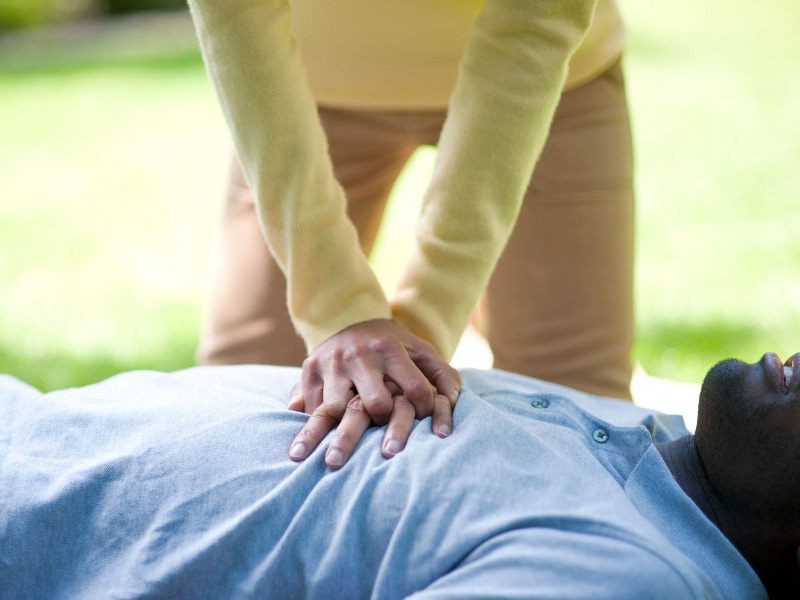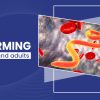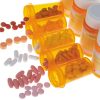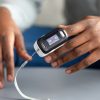- Empty cart.
- Continue Shopping
How to Use a Defibrillator in Case of Cardiac Arrest

Cardiac arrest is a life-threatening emergency that requires immediate action. A defibrillator, also known as an Automated External Defibrillator (AED), is a crucial device that can save lives by delivering an electric shock to the heart to restore its normal rhythm.
Step 1: Assess the Situation
Before using a defibrillator, ensure the safety of the victim and those around you:
- Check for responsiveness: Tap the person’s shoulder and shout loudly, “Are you okay?” If there is no response, the person is unresponsive and requires immediate help.
- Call for help: Dial 911 or your local emergency number to request professional medical assistance. Provide precise information about the location and the victim’s condition.
- Gather the necessary equipment: Locate the nearest AED. Many public places, such as schools, offices, and airports, have AEDs readily available.
Step 2: Prepare the Victim
- Ensure the victim is lying on a firm, flat surface, preferably the ground. Make sure the chest is bare and dry. Remove any clothing or obstacles that might hinder the placement of the defibrillator pads.
- If the victim is wet (e.g., from swimming or sweating), quickly dry their chest with a cloth or paper towel.
- If the victim has a hairy chest, use a razor (if available) to shave the area where the pads will be attached. This ensures good electrode-to-skin contact.
Step 3: Turn On the Defibrillator
- Locate the AED and turn it on by pressing the power button. The device will provide clear, voice-guided instructions on what to do next.
Step 4: Attach the Electrode Pads
- Expose the victim’s chest and locate the placement diagrams on the electrode pads. Typically, one pad goes on the upper right chest area (above the collarbone) and the other on the left side of the chest, just below the armpit.
- Peel the backing off the electrode pads and attach them firmly to the victim’s chest, following the diagram illustrations. Make sure the pads are securely in place.
Step 5: Analyze the Heart Rhythm
- Once the electrode pads are in place, the AED will analyze the victim’s heart rhythm. It will prompt you to “stand clear” while it assesses the rhythm.
- Make sure no one is touching the victim or the electrode pads during this analysis.
Step 6: Follow the Voice Prompts
- Listen carefully to the voice prompts from the AED. It will guide you through the next steps.
- If the AED detects a shockable rhythm (such as ventricular fibrillation or ventricular tachycardia), it will instruct you to deliver a shock. Ensure that no one is touching the victim and press the shock button as directed.
Step 7: Perform CPR
- If the AED advises against a shock, it will prompt you to perform CPR (Cardiopulmonary Resuscitation). Follow the AED’s instructions for performing high-quality CPR.
- Continue CPR until the AED reanalyzes the heart rhythm or emergency responders arrive on the scene.
Step 8: Follow Subsequent Prompts
- Continue to follow the voice prompts from the AED. It will guide you through additional shocks or CPR cycles as needed until professional help arrives.
Important Reminders:
- Stay Calm: In high-stress situations, it’s crucial to stay as calm as possible. The AED provides clear, step-by-step instructions to help you through the process.
- Don’t Hesitate: Time is of the essence during a cardiac arrest. Start CPR and use the AED as soon as possible.
- Do Not Touch the Victim During Analysis and Shock: Make sure no one is touching the victim or the electrode pads when the AED is analyzing the heart rhythm or delivering a shock.
- Regularly Check for Signs of Life: Continue to assess the victim’s responsiveness and breathing while following the AED’s instructions.
- Coordinate with Emergency Services: Always call 911 or your local emergency number as soon as possible and coordinate with professional medical responders.
Finally, Using a defibrillator in case of cardiac arrest can greatly improve the chances of survival. AEDs are designed to be user-friendly, providing voice-guided instructions to assist even those with minimal training. Remember that early defibrillation, when combined with high-quality CPR and professional medical care, is a critical component of cardiac arrest response.








